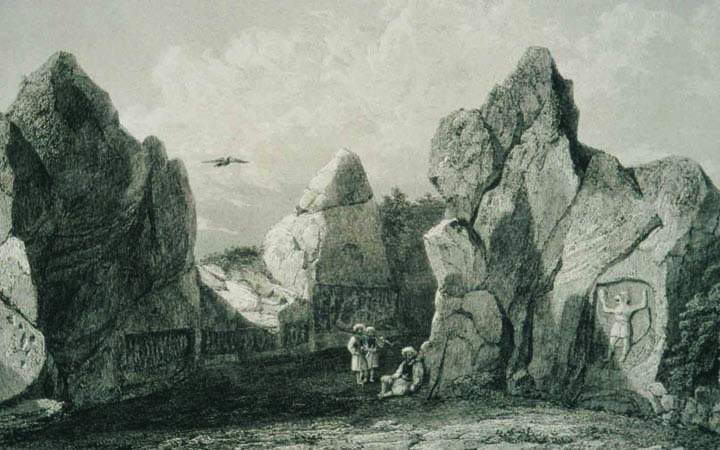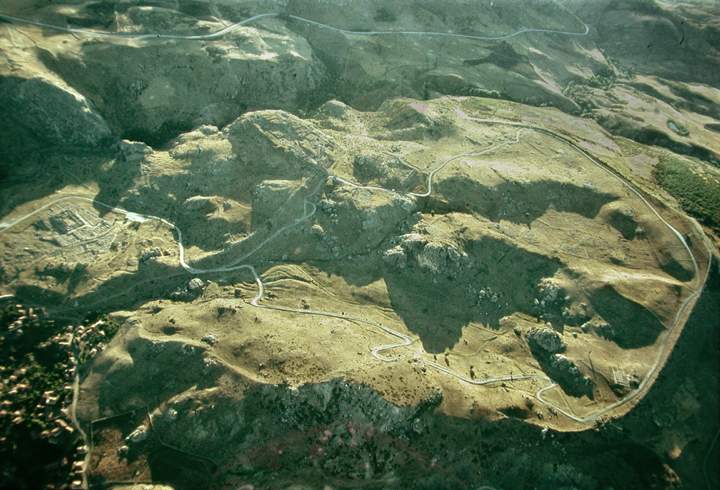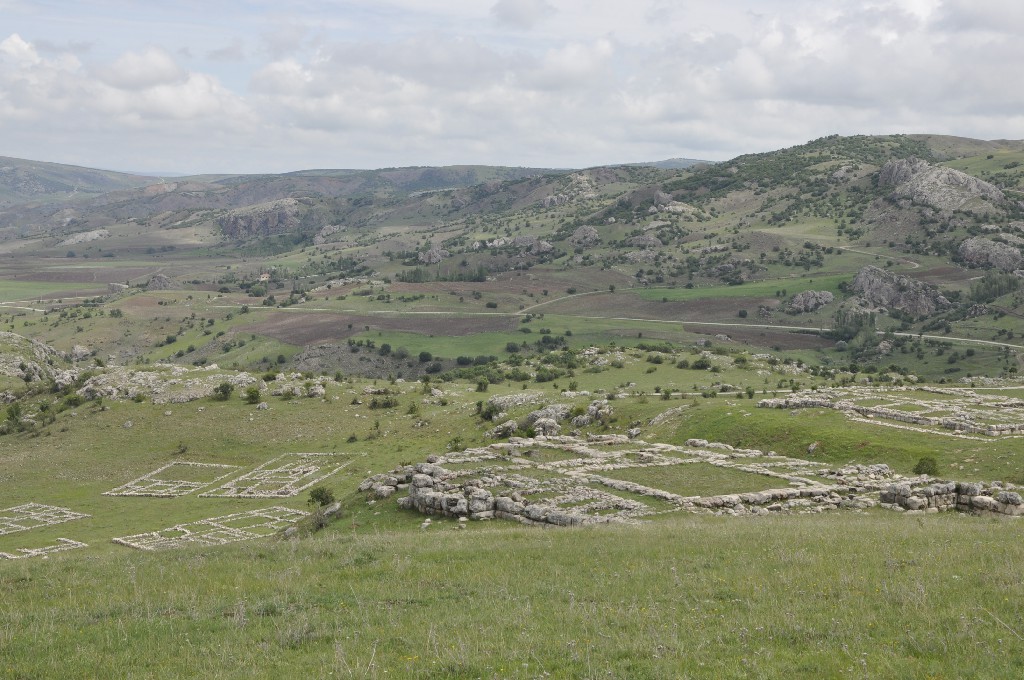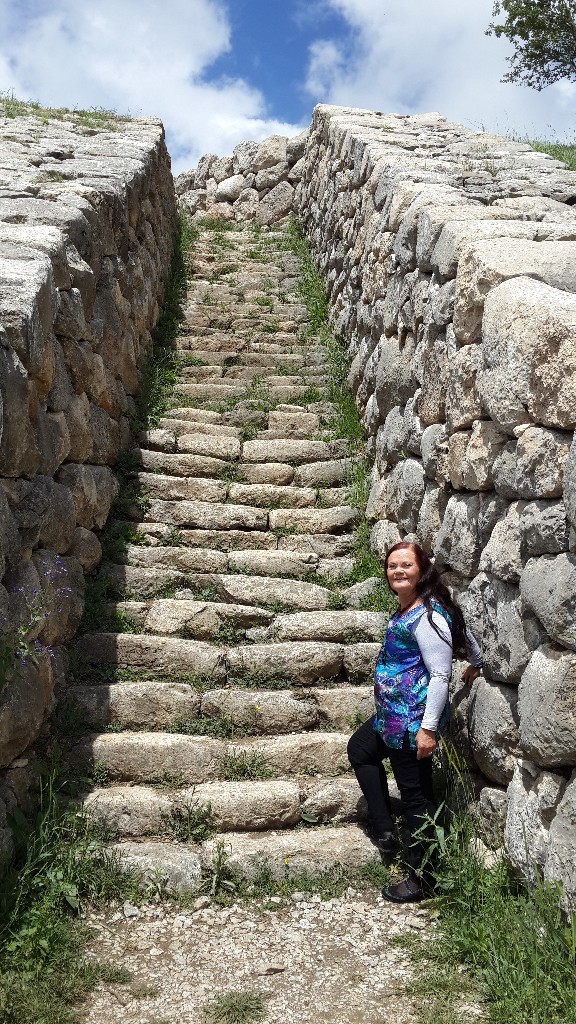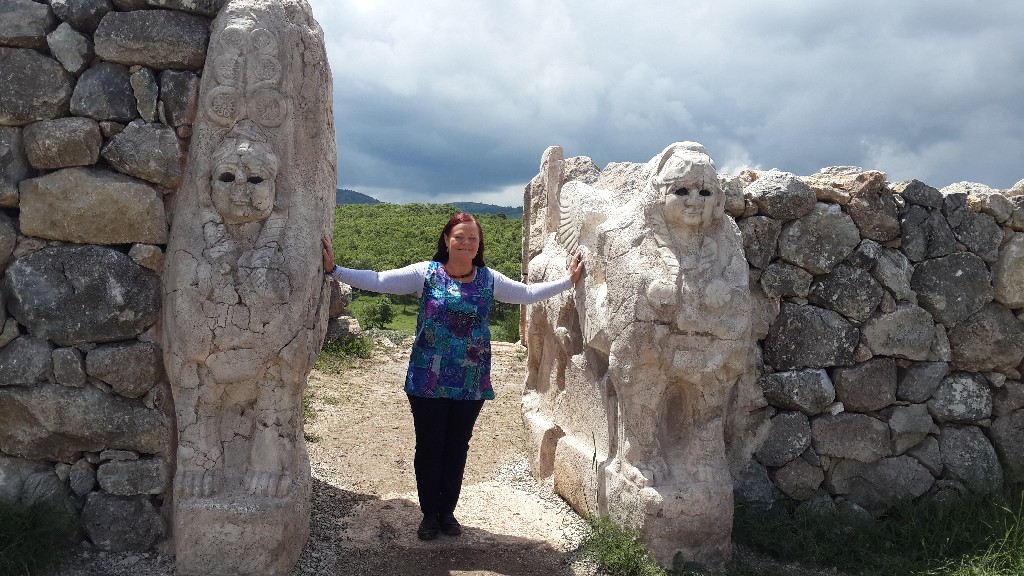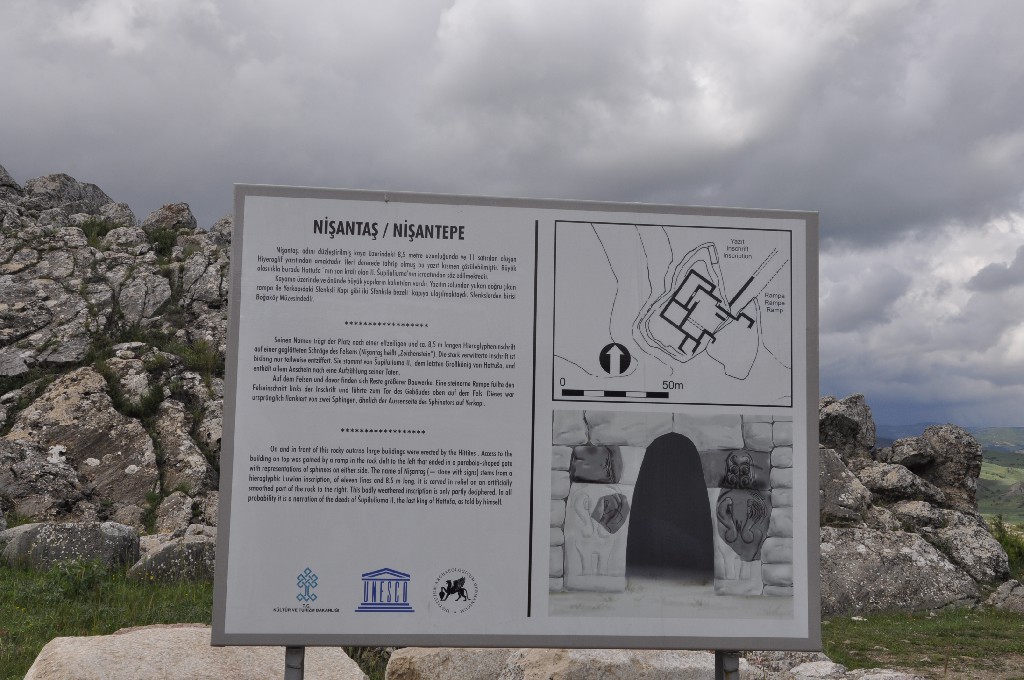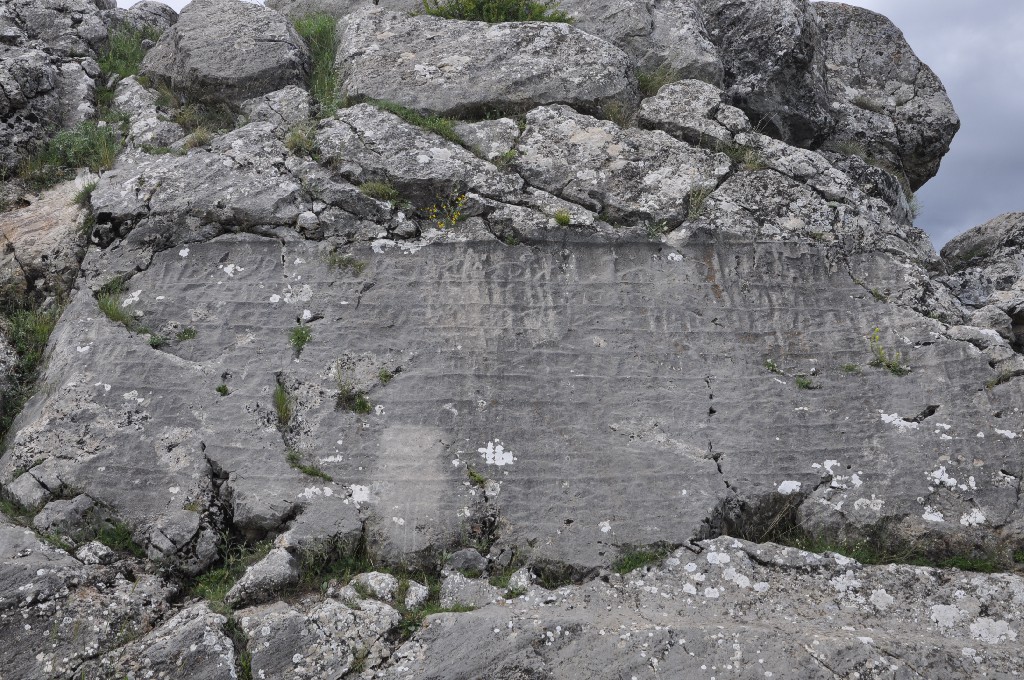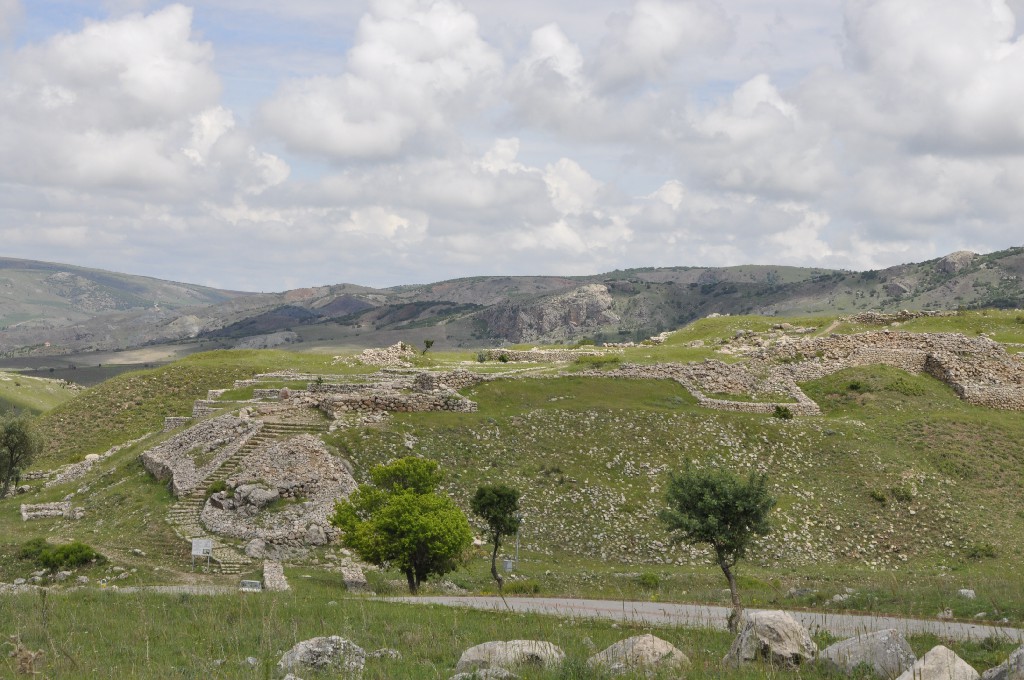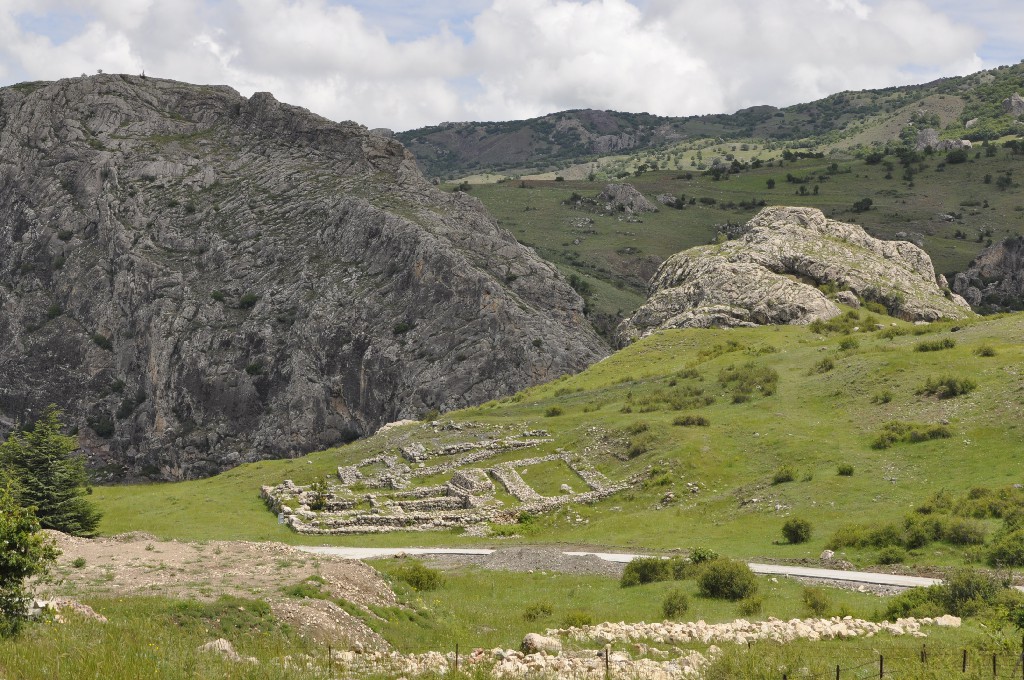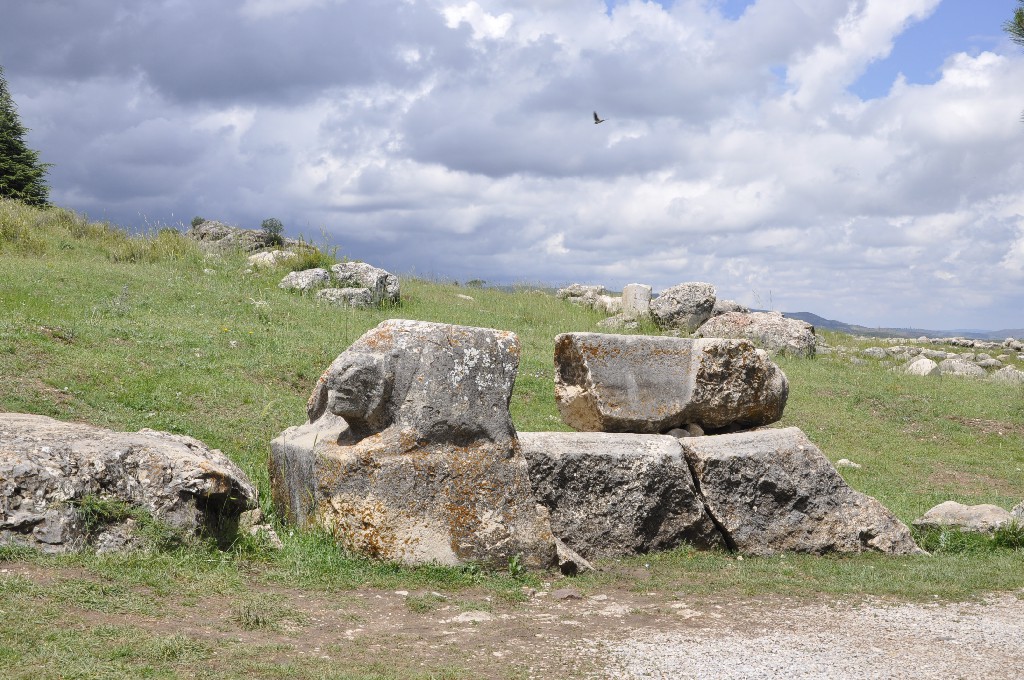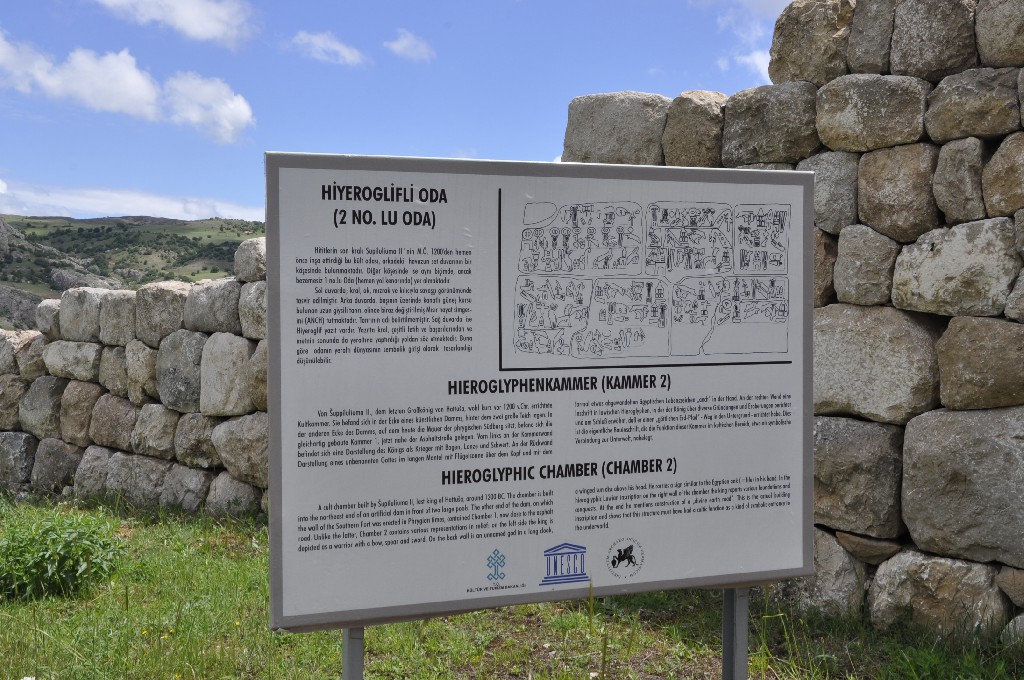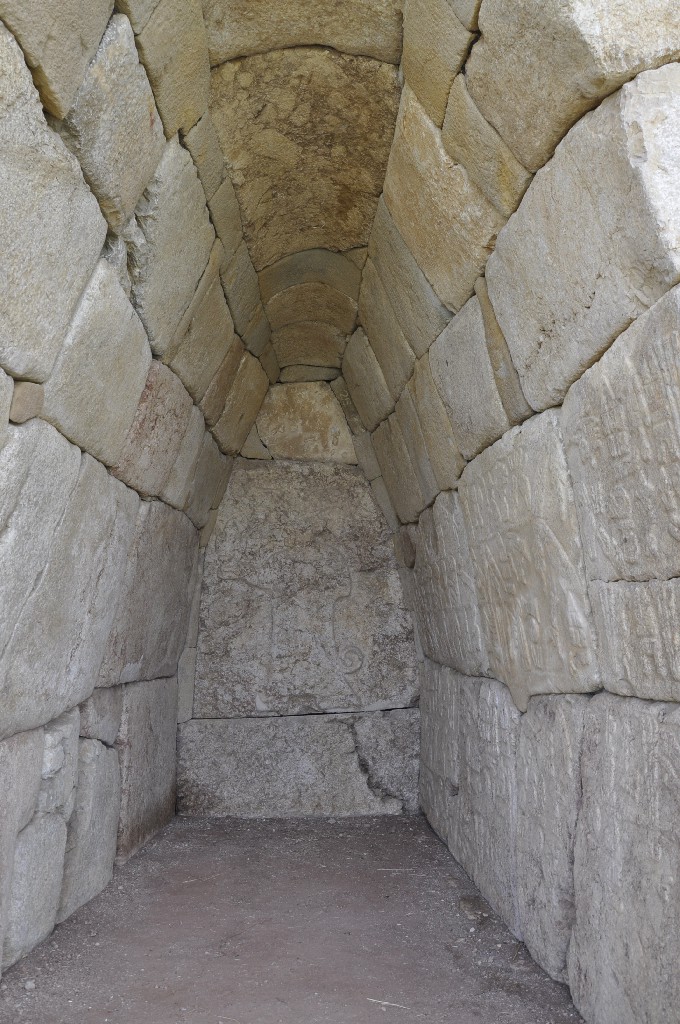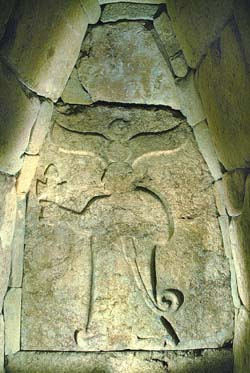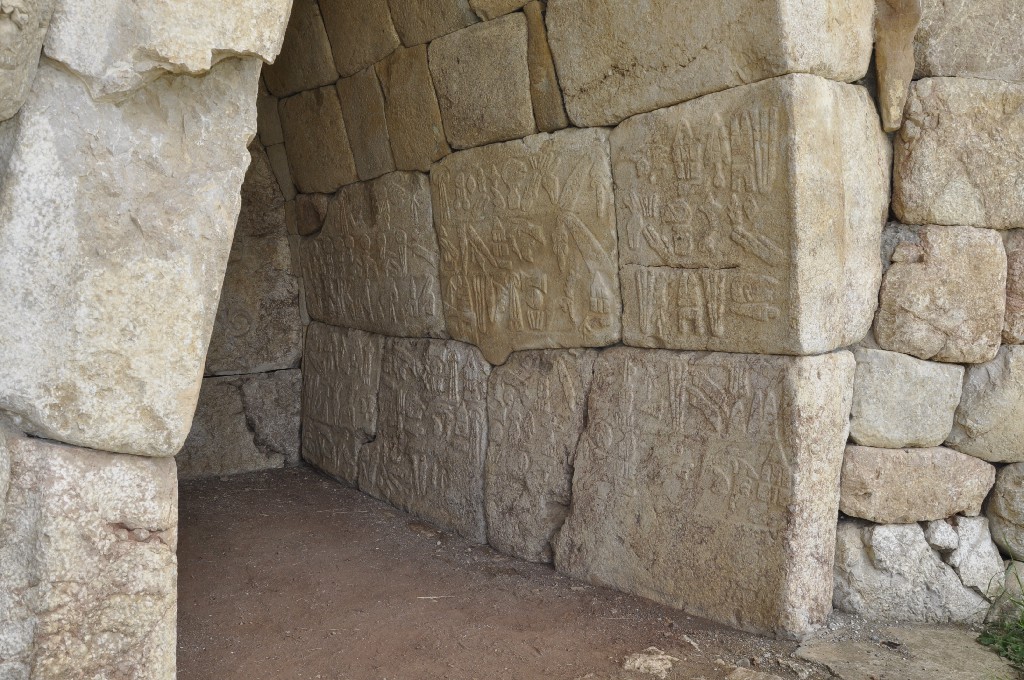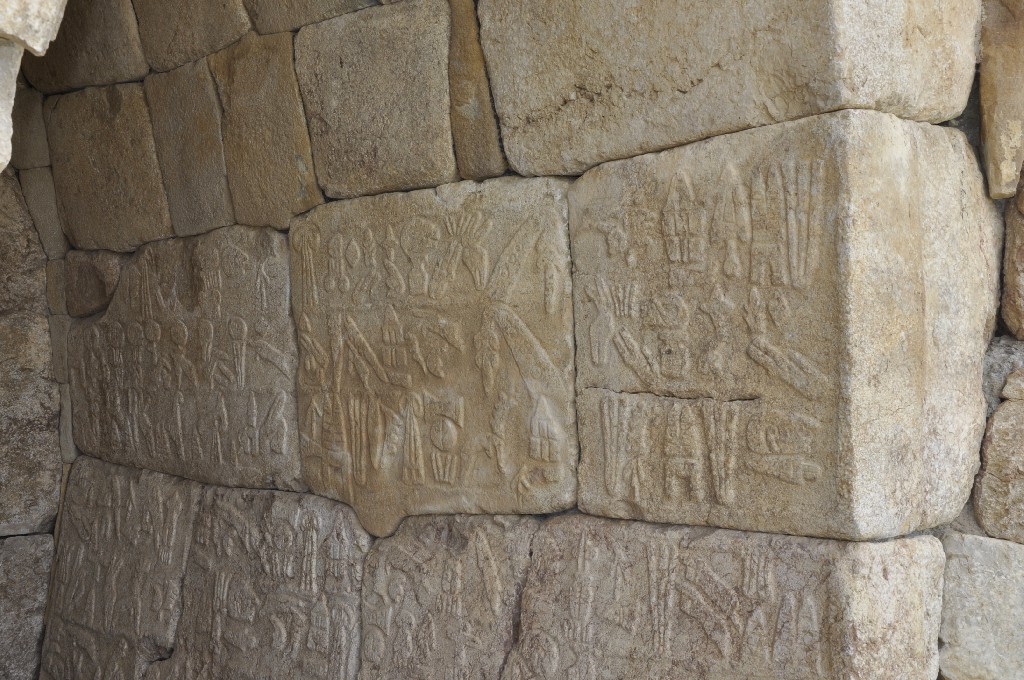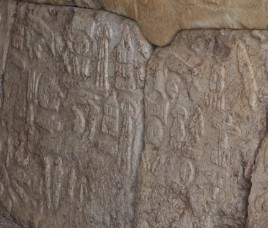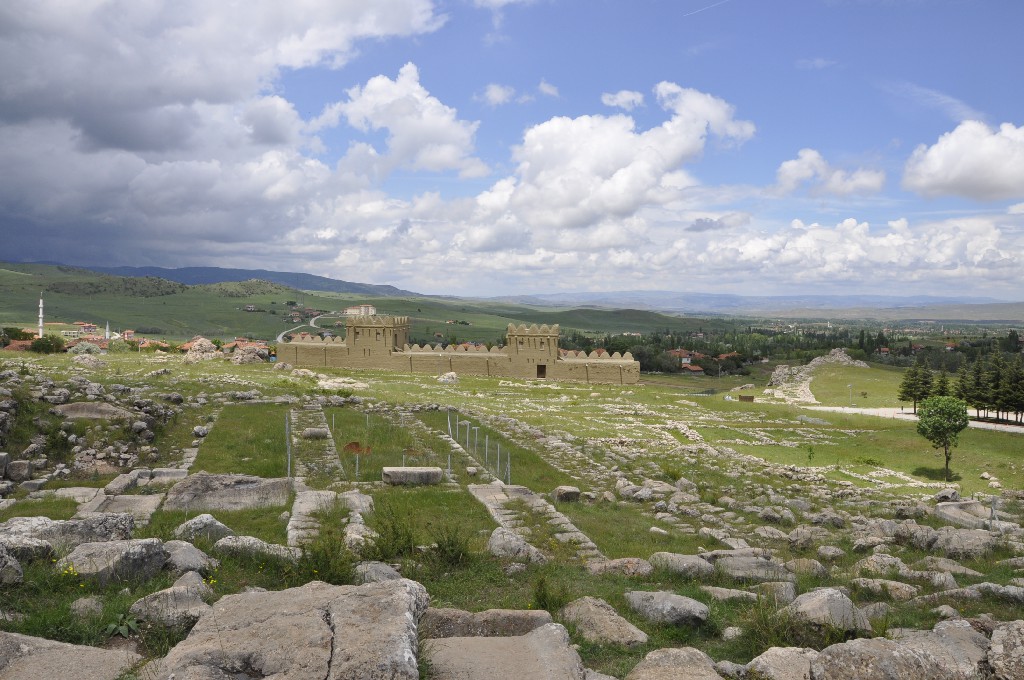
(The Hittite capital of Hattuşa, showing the reconstruction of the city wall. Viewed from the Lower City – June 2014)
…. In part 2 I will be looking at the Hittite capital of Hattuşa in greater detail. From Ankara where we visited the Museum for Anatolian Civilisations and also the Mausoleum of Ataturk it was a journey of approximately 200 kilometres to Boğazköy. On the road to Çorum and Samsun..
The discovery of Hattuşa
Although there are several reference to the Kingdom of the Hittites in the Old Testament, scholars are not wholly in agreement whether the “Children of Heth” were in fact the Hittites.
However the following text from 2 Chronicles 1:17 “And they fetched up, and brought forth out of Egypt a chariot for six hundred shekels of silver, and a horse for a hundred and fifty: and so brought they out horses for all the kings of the Hittites, and for the kings of Syria, by their means” would seem to be quite conclusive that a kingdom certainly existed”.
It was in the late 19th century, that the biblical Hittites were identified with a newly discovered Indo-European speaking empire of Anatolia.
It was Félix Marie Charles Texier (1802 – 1871), a French historian, architect and archaeologist, who was to discover the ancient Hittite capital of Hattuşa. He had been sent on an exploratory mission in 1883 to Asia Minor. One of the results of the expedition, was the publication of the two-volume Description de l’Asie Mineure faite par ordre du Gouvernement français.
From the book: Hattusha Guide- A day in the Hittite Capital by Jurgen Seeher we read the following;
“On July 28 Charles Texier discovers the ruins of Hattusha. Believing he has found Pteria, a city of the Medes, he makes drawings of reliefs at Yazılıkaya and some of the city ruins, and prepares a rough plan of the city.”
(Drawing of reliefs at Yazilikya)
It was however only in 1906 that “Hugo Winckler and Theodor Makridi began excavating on behalf of the Ottoman Museum in Istanbul on Büyükkale and make sondages in various other places. 2500 fragments of cuneiform tablets recovered here first identify the city as the Hittite capital of Hattusha”.
And it is with the aid of the “cuneiform tablets from Bogazköy, that Bedrich Hrozný is able to decipher the Hittite language”.
1931 -39 and 1952 to the present.
“The German Institute Archaeology , for many years with the cooperation of the German Oriental Society as well, conducts excavations; the successive directors have been Kurt Bittel (through 1977), Peter Neve (1978-1993), Jürgen Seeher (1994-2005) and Andreas Schachner. Nearly all the remains of the Hittite Royal Citadel on Büyükkale have been cleared, and large-scale excavation has exposed wide areas of the settlement in the Lower City, the Great Temple, the temple precinct in the Upper City and its surroundings, as well as on the high spur of Büyükkaya. Excavation on a smaller scale has been carried out in various other locations within the city and in the immediate surroundings, as well as in the rock sanctuary of Yazılıkaya”
Before visiting the actual site I went to the museum and was able to look at some of the finds there.
Describing the site we read:
“The first ‘settling in’ around Boğazköy took place in the 6th millennium BC during the Chalcolithic period, when small widely scattered hamlets appeared most particularly on mountain slopes and rocky outcroppings. Late in the 3rd millennium BC, towards the end of the Early Bronze Age, a Hattian settlement developed, marking the beginning of continuous occupation at the site. The Hattians, native Anatolians, called their town Hattush
During the Middle Bronze Age the Hattian occupation grew into a city of such significance that a Karum was established here in the 19th and 18th centuries BC – a trading post of Assyrian merchants who had come from Assur. With their caravans of donkeys they transported goods to and from Mesopotamia, and along their route they also dealt in local Anatolian products, thus stimulating a certain “globalization”. It was these Assyrian traders who first introduced writing to Anatolia.
The ruins excavated demonstrate that the city of Hattush was burned down in a great conflagration around 1700 BC. Responsible was King Anitta from Kussar, who also put a curse on the site. But already by the second half of the 17th century BC the temptation to settle here again had obviously become overwhelming, for a Hittite king had indeed chosen the site as his residence and capital. The Hattian Hattush was now the Hittite Hattusha, and the king took the name of Hattushili, or “one from Hattusha.” This is the beginning of the story of the Hittite capital and the Hittite Royals – until now, 27 kings are known by their names.
The Old Hittite city comprised an area of almost 1 square kilometer; it was protected by a massive fortification wall. On the high ridge of Bykkale was the residence of the Great King, and the city lay on the slope below to the northwest, reaching to the valley below. In the course of time great effort was spent on the development of the Upper City. This area south of the Old City was included into the city limits through the erection of a new 3.3-km long defense wall with several monumental gates, thus bringing the size of the city to 182 hectares. Within the wall a great many large structures were built, among them many temples – houses for “the Thousand Gods of the Hatti Land”.
This is the aerial view:
Map of the area:
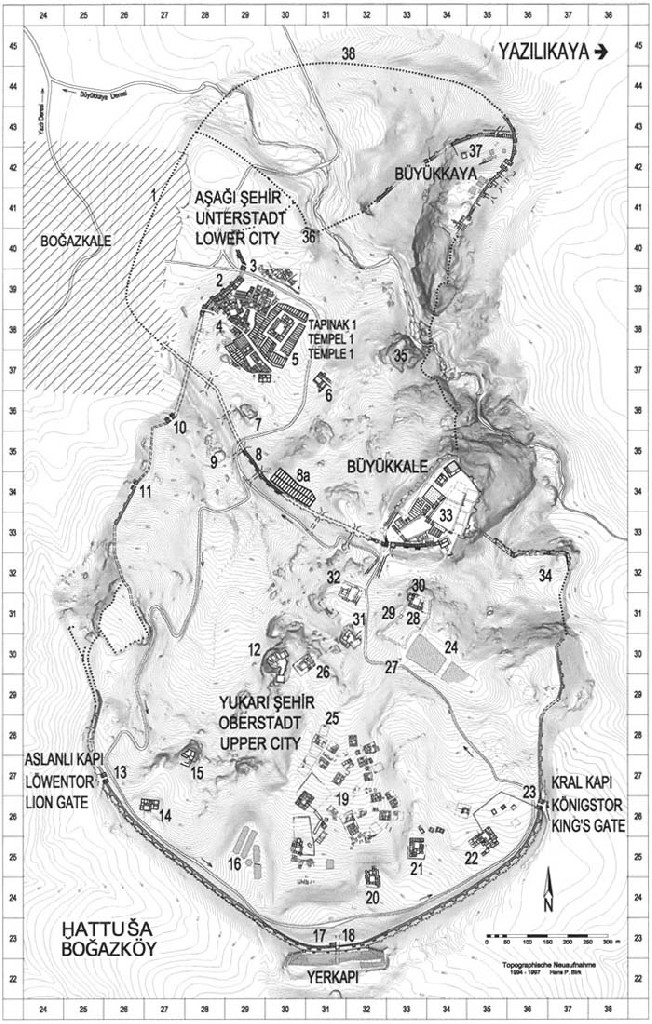
- The western fortification wall of the Lower City
- The “Abschnittsmauer” (section of the wall)
- Ticket-office
- Residential area excavated in the Lower City
- Temple 1 and storerooms
- The House on the Slope
- Kesikkaya
- The Postern Wall, 8a Grain Silo
- Kizlar Kaya
- The Lower West Gate
- The Upper West Gate
- Sarikale
- The Lion Gate
- Temple 30
- Yenicekale
- The Southern Ponds
- The Yerkapi rampart
- The Sphinx Gate
- The central Temple District
- Temple 2
- Temple 3
- Temple 5
- The King’s Gate
- The Eastern Ponds
- Byzantine church
- Temple 7
- Chamber 1
- The Hieroglyph Chamber (Chamber 2)
- The Southern Citadel
- Temple 31
- Nisantas/Nisantepe
- The “North Complex” at Nisantas
- Büyükkale
- The Eastern Plateau
- Ambarlikaya
- Mihraplikaya
- Büyükkaya
- The northern City Wall
(19 – The central Temple district 1 – June 2014)
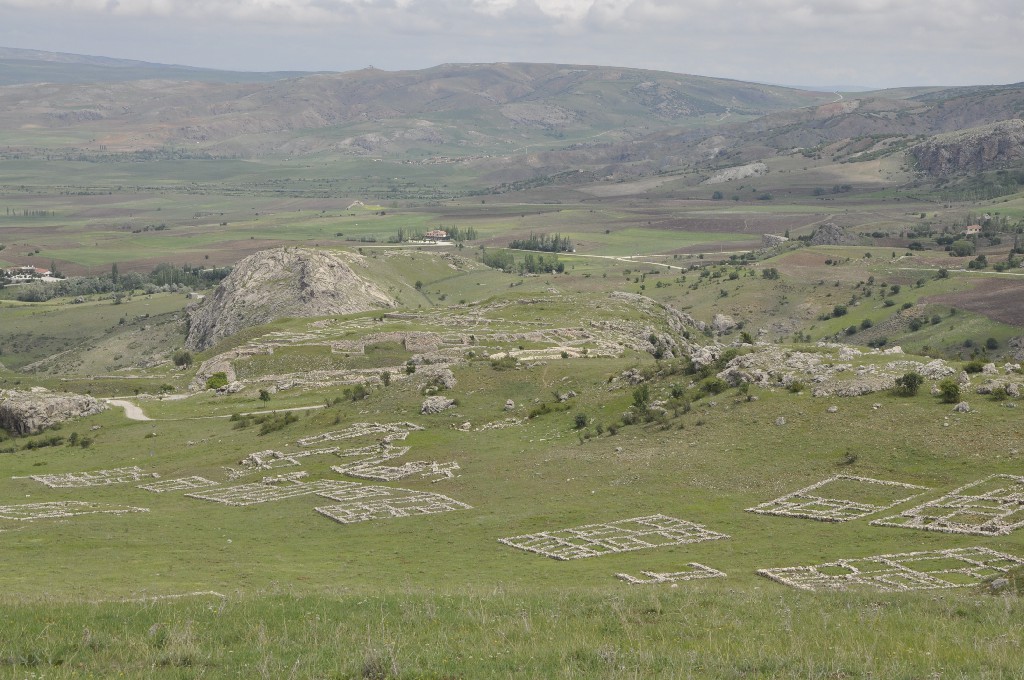
(19 – The central Temple district 2 – June 2014)
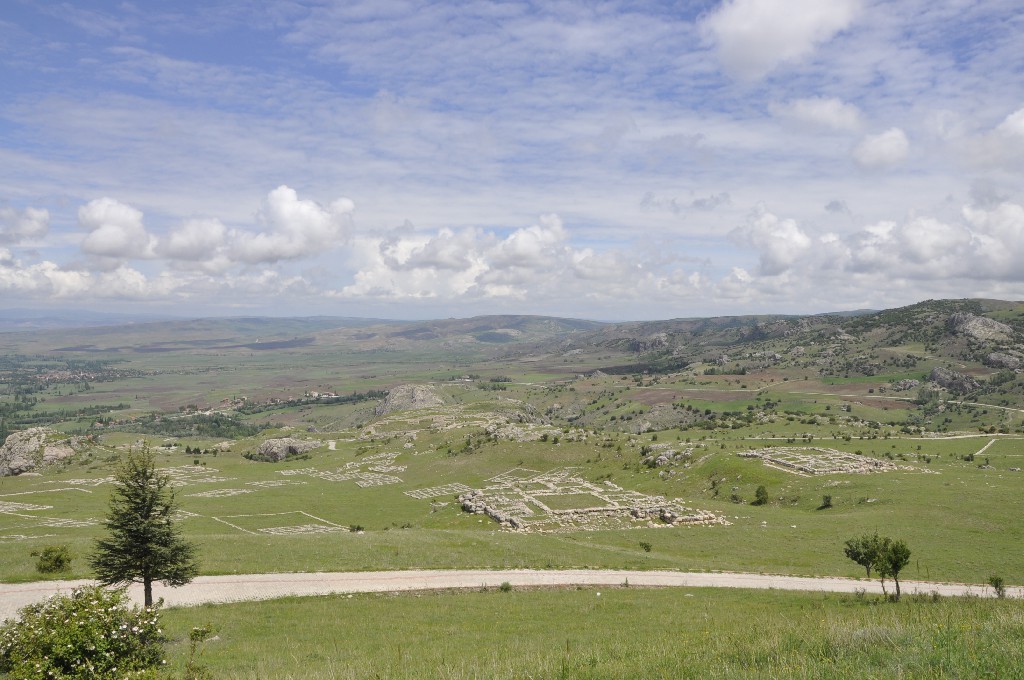
(19 – The central Temple district 3 – June 2014)
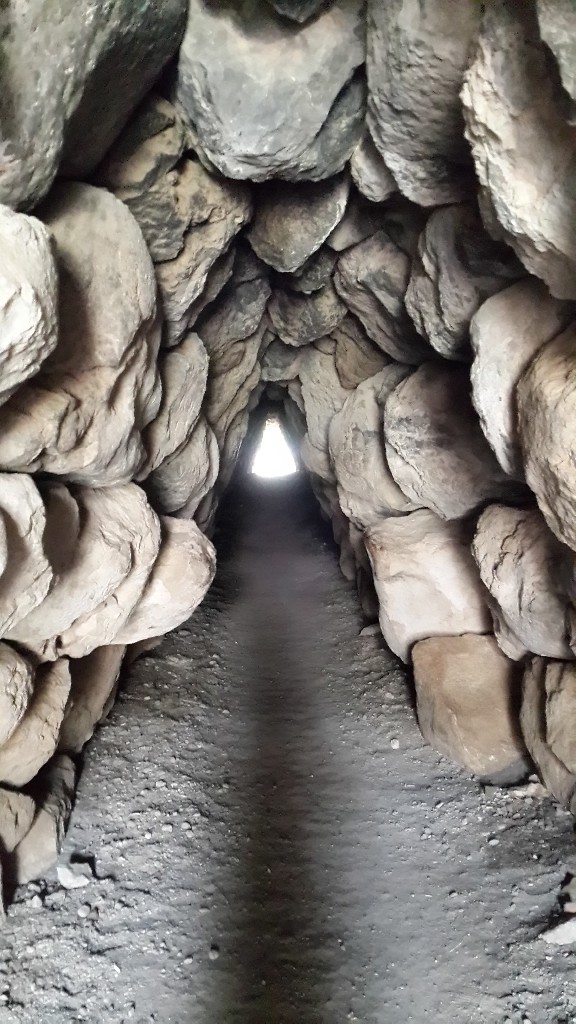
(Entrance to one of the posterns (= tunnels) in the Postern Wall – June 2014)
“Eight tunnels, or posterns led underneath the wall to openings outside. They are between 70 and 180 m distant from one another. You can see the entrances today, although the passages are filled with debris. The tunnels were of corbeled masonry like the passageway in the Upper City at Yerkapi, which you can walk through during your visit. The function of these posterns remains open to interpretation. Their earlier identification as sally ports, through which one could run out and attack the besieging enemy from the rear, gave rise to the name postern, from the Latin posterula ( = back- or side door). There must, however, be more behind this phenomenon, for certainly the Hittites would have better camouflaged sally ports.”
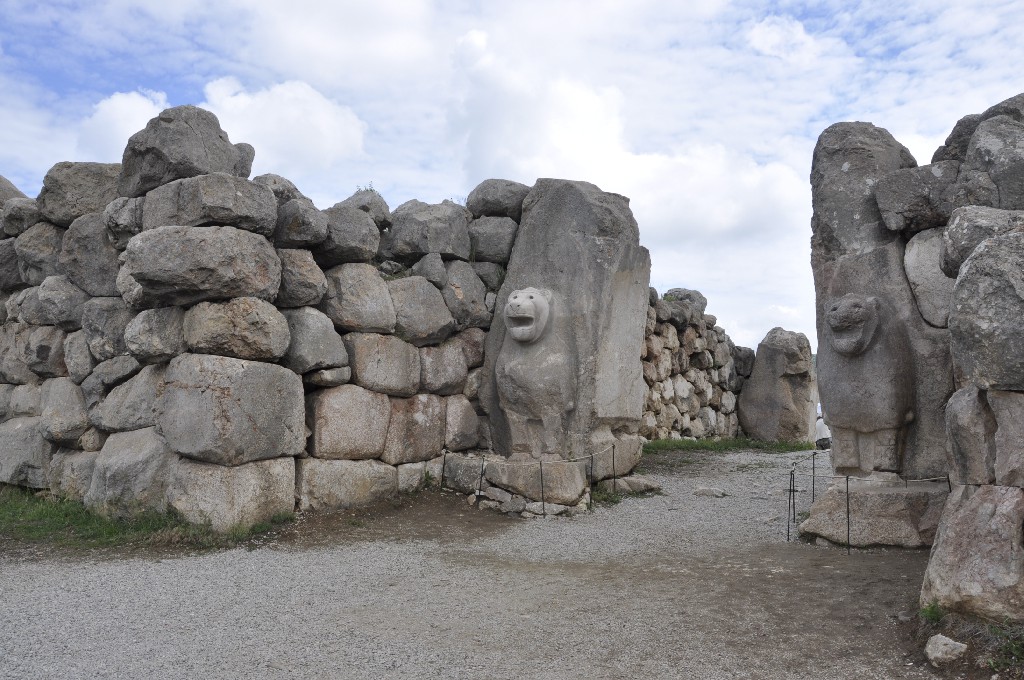
(The Lion Gate (13) – June 2014) “The door takes its name from the two sculptured lions whose heads, breasts and feet were cut out of the exterior of the huge blocks lining the passageway. Lions were popular figures of protection and ornament at doorways throughout the ancient Near East, and Hattusha was no exception; lions guarded not only this gate, but several temple entrances and the portals to the Royal Palace as well. All were most vividly depicted, their teeth clenched, their tongues hanging from their mouths, and their wide eyes alert and threatening. The eyeballs were originally inlaid with a white limestone fill set with black pupils. A computer reconstruction recreates the general impression of the exterior of the gate in its former glory. Here one is immediately struck by the parabolic form of the entrance, typical of many Hittite portals and gateways.”
(One of the staircases leading up to the Yerkapi rampart – June 2014)
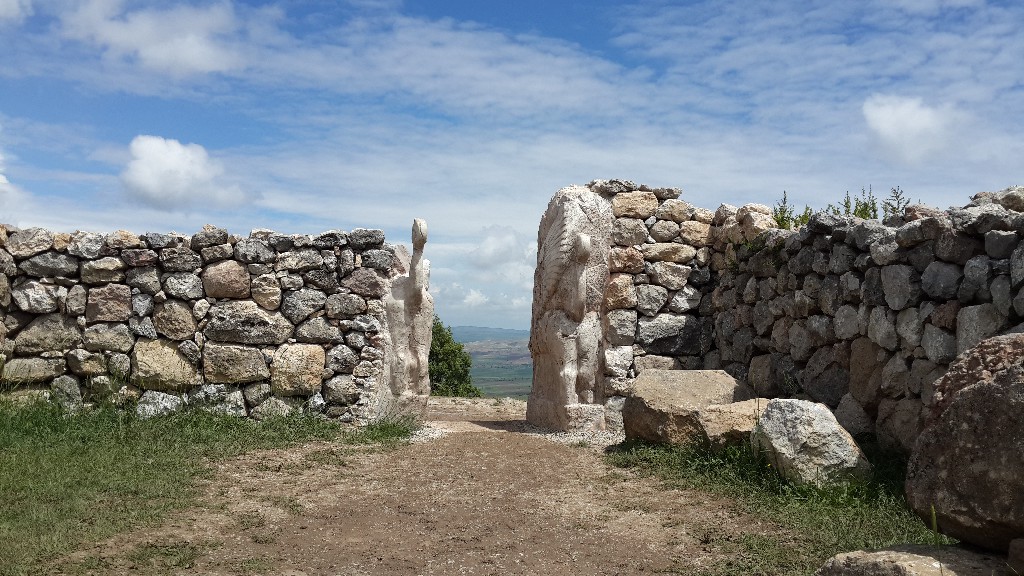
(Sphinx’s Gate (18) – June 2014)
From http://en.wikipedia.org/wiki/Hattusa:
“A pair of sphinxes found at the southern gate in Hattuşa was taken for restoration to Germany 1917. The better-preserved sphinx was returned to Istanbul in 1924 and was placed on display in the Istanbul Archaeology Museum whereas the other remained in Germany and had been on display at the Pergamon Museum since 1934. Previously, Turkey had made numerous requests for its return. In 2011, threats by Turkish Ministry of Culture to impose restrictions on German archaeologists working in Turkey finally persuaded Germany to return the sphinx. The Istanbul sphinx was also brought back to its place of origin, and the pair was reunited in Boğazköy Museum outside the Hattuşa ruins”.
And here is the report in the Hurriyet Daily News, November 7, 2011
“Hattuşa reunites with sphinx
ÇORUM – Anatolia News Agency
The Boğazköy Sphinx, which was brought to Turkey from the Berlin Pergamon Museum on July 28 after long-running talks with German officials, will go on display Nov. 26 in its home with its other counterpart that has been on display at the Istanbul Archaeology Museum”.
http://www.hurriyetdailynews.com/hattusa-reunites-with-sphinx.aspx?pageID=238&nID=7062&NewsCatID=385
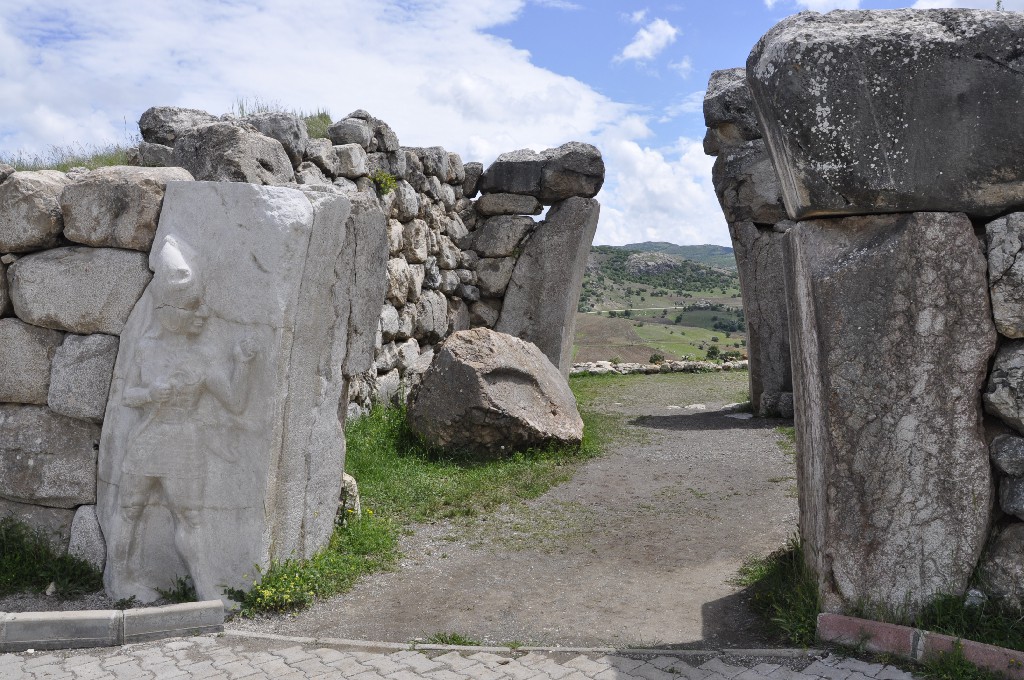
(The King’s Gate (23) – June 2014)
“The sculpture of a warrior in high relief – parts of it more than half in the round- measures 2.25 m from the top of the helmet to the tip of the toe. Dressed only in a short, richly patterned wrap-around skirt, the warrior carries a short sword with a crescent grip tucked into his wide belt. In his hand he holds a decorated axe. On his head he wears a pointed helmet with wide cheek-guards and a protective collar. His long hair falls to his shoulders at the back, and a ribbon attached to the peak of his helmet hangs to elbow-length. One curving horn is sculpted at the front of the helmet; the observer must picture a second out of sight at the back. Because horns on the helmet are attributes of the gods, our warrior is likely to be the representation of a god. He may well be Sharrumma, son of the weather-god Teshub and the sun-goddess Hepat, patron and protector of the Great King Tudhaliya IV. This king, who is thought to be responsible for some of the buildings in the Upper City, might well have honored his own patron god with this monument.”
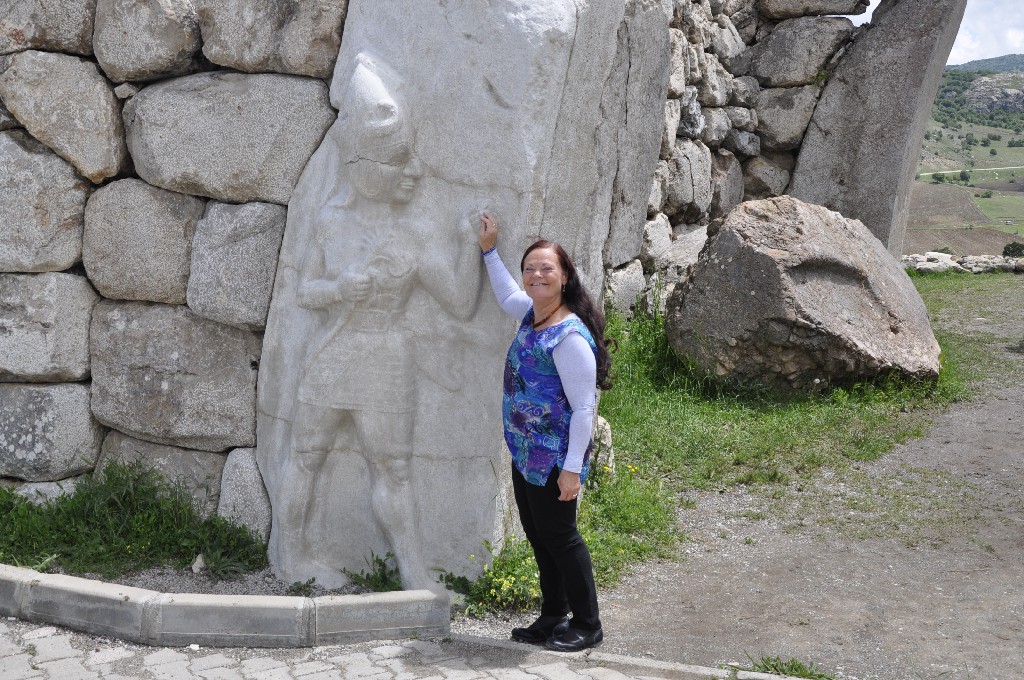
(The King’s Gate (23) – June 2014)
(Nisantepe (31) – North Complex – June 2014)
(Nisantepe (31) – inscription in Luvian hieroglyphics – June 2014)
“The Inscription. The name of the site is identified by a large inscription in Luvian hieroglyphics on the side of the cliff Nişantaş = marked rock). The 8.5-m long inscription, eleven lines in length, was chiseled onto a smoothed surface on the cliff face. The hieroglyphic signs once resembled those in Chamber 2, but have become badly weathered through exposure to the elements; as a result much of the content of the text has never been deciphered. It is clear that it stems from the rule of Shupiluliuma II, the last of the well-known Great Kings of Hattusha. We surmise that the Great King mentions the construction of a monument for his father (= Chamber B of the rock-cut sanctuary of Yazılıkaya) here, as well as reporting other of his accomplishments, including a battle at sea followed by a landing on Cyprus. Known to the Hittites as Alashiya, the island of Cyprus – due to its rich sources of copper – was the object of much strife in antiquity.”
(Views of the Temple district in the Upper City – June 2014)
(Views of the Temple district in the Upper City – June 2014)
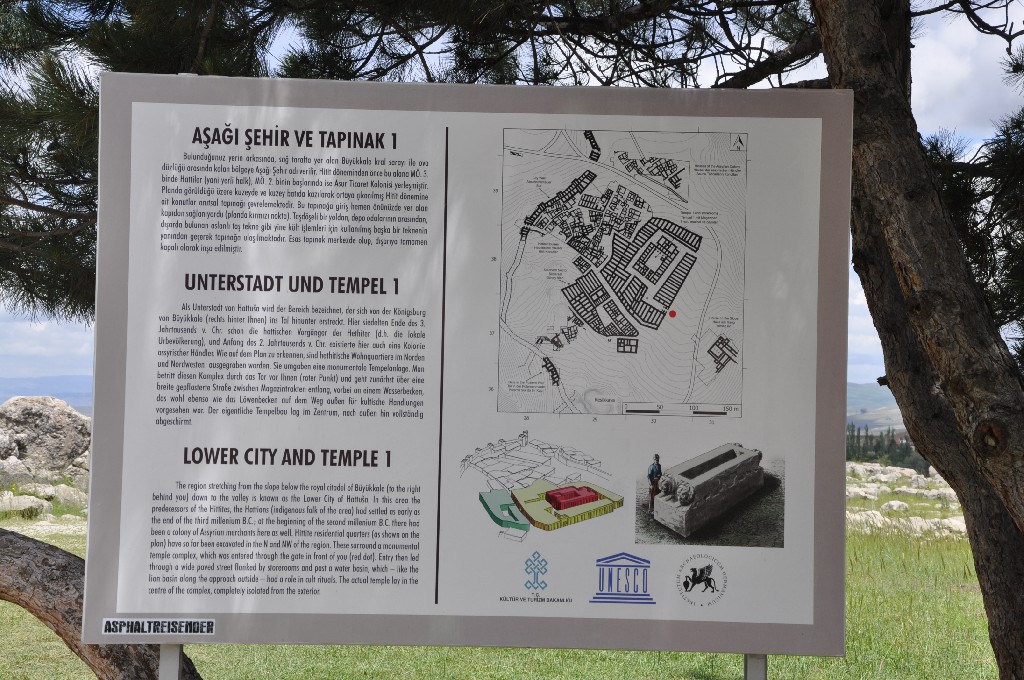
(Information about the Lower City and Temple 1 – June 2014)
(Lion Basin – June 2014)
(Information about the hieroglyphic chamber 2 – June 2014)
(Hieroglyphic Chamber – June 2014)
(Detail of the Sun God in relief on the back wall of Chamber 2 – http://www.hattuscha.de/English/chamber2.htm)
“On the back wall stands a sun-god in a long cloak and slippers curling up at the toe. Identified by the double winged sun positioned over his head, he holds a curved rod in his left hand, and in his right-as befits a giver of life-a somewhat modified version of the Egyptian ankh-the emblem of life.”
I think it looks more like the double-axe, the Labrys 🙂
(Hieroglyphic Chamber – close-up – June 2014)
(Hieroglyphic Chamber – close-up – June 2014)
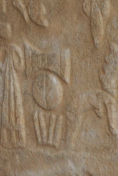 “We have a six-line inscription in Luvian hieroglyphics chiseled into the wall opposite. (Luvian hieroglyphics are a picture-script developed in Anatolia; neither linguistically nor pictorially do they have anything to do with Egyptian hieroglyphics). Although the inscription has yet to be completely deciphered, the main gist of it is clear: the Great King Shupiluliuma reports that with the blessings of the gods he has conquered several lands, including that of Tarhuntassa, and that he has founded new cities and made sacrifices to the gods at various locations. The last sentence mentions “a divine earth-road”. D. Hawkins, a specialist on Luvian hieroglyphs, accepts this as the dedicatory building inscription stating the purpose of the structure, here indicated as a passage leading into the earth, into the underground. Thus the chamber might have been a symbolic entrance to the Underworld.”
“We have a six-line inscription in Luvian hieroglyphics chiseled into the wall opposite. (Luvian hieroglyphics are a picture-script developed in Anatolia; neither linguistically nor pictorially do they have anything to do with Egyptian hieroglyphics). Although the inscription has yet to be completely deciphered, the main gist of it is clear: the Great King Shupiluliuma reports that with the blessings of the gods he has conquered several lands, including that of Tarhuntassa, and that he has founded new cities and made sacrifices to the gods at various locations. The last sentence mentions “a divine earth-road”. D. Hawkins, a specialist on Luvian hieroglyphs, accepts this as the dedicatory building inscription stating the purpose of the structure, here indicated as a passage leading into the earth, into the underground. Thus the chamber might have been a symbolic entrance to the Underworld.”
Coming back to the Labrys, or double-axe, if you look closely at the hieroglyphs there is the same symbol in combination with a circle and a W.
And here on 2 occasions… on the bottom row.
When I asked a Turkish friend what she thought it represented she said spontaneously “the path to the Centre of the Earth…” .
Were the hieroglyphs also revealing a map?
In my “Tales of Anatolia” this is not the first time I have come across the Labrys. I have previously seen a link with the double axe as the weapon of Zeus – at Labranda – and other Thunder or Storm Gods such as Thor.
The major Hittite deities were Storm Gods and as we saw earlier the warrior at the King’s gate also carried an axe.
See this close up of the warrior at the King’s gate …
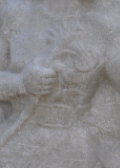 According to Trevor Bryce in his book “Life and Society in the Hittite World”; “The king is presented with a ceremonial axe in exchange for his spear”
According to Trevor Bryce in his book “Life and Society in the Hittite World”; “The king is presented with a ceremonial axe in exchange for his spear”
If the axe represented the sky/thunder, and the circle the earth, then is it possible the ‘W’ was the ‘waters’?
In part 3 I will be looking more closely at the hieroglyphs and literacy in the Hittite world and Hittite magic.
References:
All the photos dated “June 2014” were taken by Kemal Contay during out visit to Hattuşa
“Hattusha Guide- A day in the Hittite Capital” – Jürgen Seeher – revised edition 2006, ISBN 975807-145-9
For the online version of this guide with many links to the various sections of Hattusha, go to this website:
http://www.hattuscha.de/English/discovery.htm
For information about the reconstruction of the city walls: http://www.hattuscha.de/English/citywall.htm
Lower city: http://www.hattuscha.de/English/lowercity.htm and so on.
Museum at Boğazköy/ Hattusha : http://www.hattusadaikigun.com/eng/hattusa_001.html
For some wonderful photos of many Hittite artefacts: http://www.pinterest.com/ebakla/hittite/
| יז וַיַּעֲלוּ וַיּוֹצִיאוּ מִמִּצְרַיִם מֶרְכָּבָה, בְּשֵׁשׁ מֵאוֹת כֶּסֶף, וְסוּס, בַּחֲמִשִּׁים וּמֵאָה; וְכֵן לְכָל-מַלְכֵי הַחִתִּים, וּמַלְכֵי אֲרָם–בְּיָדָם יוֹצִיאוּ. | 17 And they fetched up, and brought out of Egypt a chariot for six hundred shekels of silver, and a horse for a hundred and fifty; and so for all the kings of the Hittites, and the kings of Aram, did they bring them out by their means. |
http://www.mechon-mamre.org/p/pt/pt25b01.htm
http://www.historyworld.net/wrldhis/plaintexthistories.asp?historyid=ab66
http://creationwiki.org/Hittite_empire
http://creationwiki.org/Hattusa
http://en.wikipedia.org/wiki/F%C3%A9lix_Marie_Charles_Texier
http://en.wikipedia.org/wiki/Book_of_Genesis
For some wonderful photos of many Hittite artefacts: http://www.pinterest.com/ebakla/hittite/
And his own sculptures: http://www.pinterest.com/ebakla/sculpture-erdinc-bakla/

